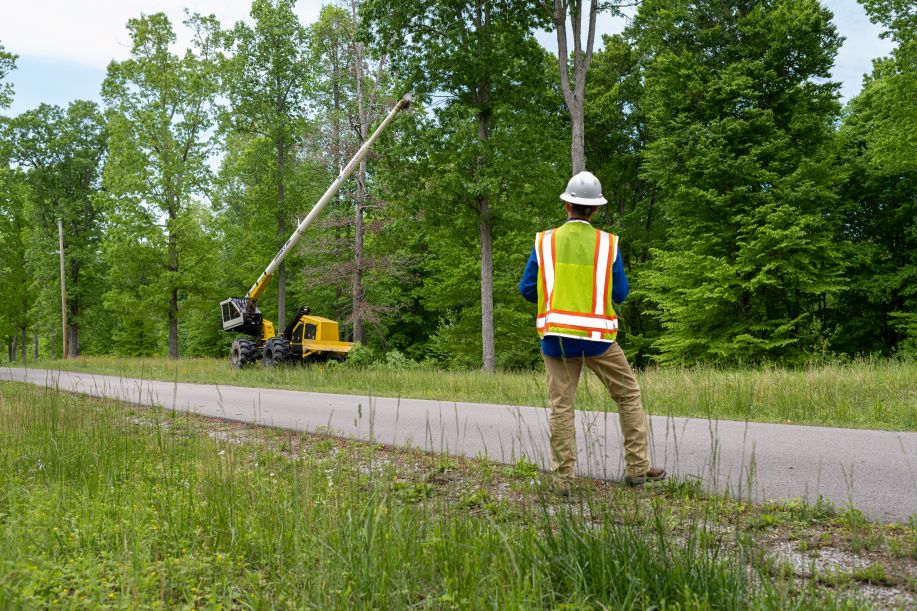Managing Traffic While on the Job
By Jason Cowart

Our industry is a dangerous one. There are countless things on a job site to look out for, such as a falling dead limb or a live electrical line. These hazards are mitigated by internal controls, safety measures, and training. There are also external factors that must be mitigated as well. One example is civilian traffic around a job site.
According to the U.S. Bureau of Labor Statistics, from 2003-2019, 2,103 workers lost their lives at road construction sites.
Just like personal protective equipment to keep our bodies safe, or harnesses to keep us from falling, we use traffic safety measures to keep our crews safe while working near roads. The Federal Highway Administration publishes the Manual on Uniform Traffic Control Devices for this reason. This document outlines safety measures that we must follow to help keep our workers safe. The manual covers all aspects of highway and road safety. One important aspect is the temporary traffic control area.
The temporary traffic control area is set up so arborists can move around to many job sites throughout the day with minimal disruption to traffic. The Manual on Uniform Traffic Control Devices breaks this area up into three sections — the advanced warning area, activity area, and termination area.
The advanced warning area lets traffic know there is work going on up ahead. It is used to give people plenty of time to slow down. We use trucks with flashing arrows, lit-up signs, and regular orange signs to alert traffic. The Manual on Uniform Traffic Control Devices sets distance parameters depending on areas such as urban or rural, and speed on the road.
Once alerted, motorists will enter the activity area. This is where the work is being done. This area consists of the workspace, buffer space, and traffic space. The workspace is the area designated for all the materials, vehicles, and tools for the job. The buffer space is an area between traffic and the workspace. This gives traffic a buffer in case the vehicle breaches the safety barrier. The traffic space is where the traffic flows through the activity area.
The last part the manual covers is the termination area. The termination area is where the traffic is diverted back to normal highway conditions. Traffic is slowly diverted by using cones or other devices so people can get back up to normal speed.
As we all know, it is dangerous to be out on the roads. Just like regulations to keep other motorists safe, the Federal Highway Safety Administration puts out the Manual on Uniform Traffic Control Devices to keep those of us working near roads safe, as well. These regulations are meant to alert and train motorists to take extra care while driving in road work areas. It is extremely important for us to be consistent when setting up these areas. The more consistent we are, the more likely motorists will know what to expect.
If you’re unsure of your organization’s safety best practices or if the Manual on Uniform Traffic Control Devices is implemented throughout your organization, be sure to contact your organization’s safety leaders.
Jason Cowart is a senior consulting utility forester at ACRT. He is a U.S. Air Force veteran with experience in project management, safety, logistics and quality control. Cowart holds a Bachelor of Science degree in aeronautics with a minor in aviation safety from Embry–Riddle Aeronautical University in Daytona, Fla. He also holds two additional associate degrees in aeronautical science and aviation maintenance technology.
Reference: Federal Highway Administration; for sale by the Supt. of Docs., U.S. Govt. Print. Off., Washington. (2009). Manual on Uniform Traffic Control Devices for Streets and Highways.


